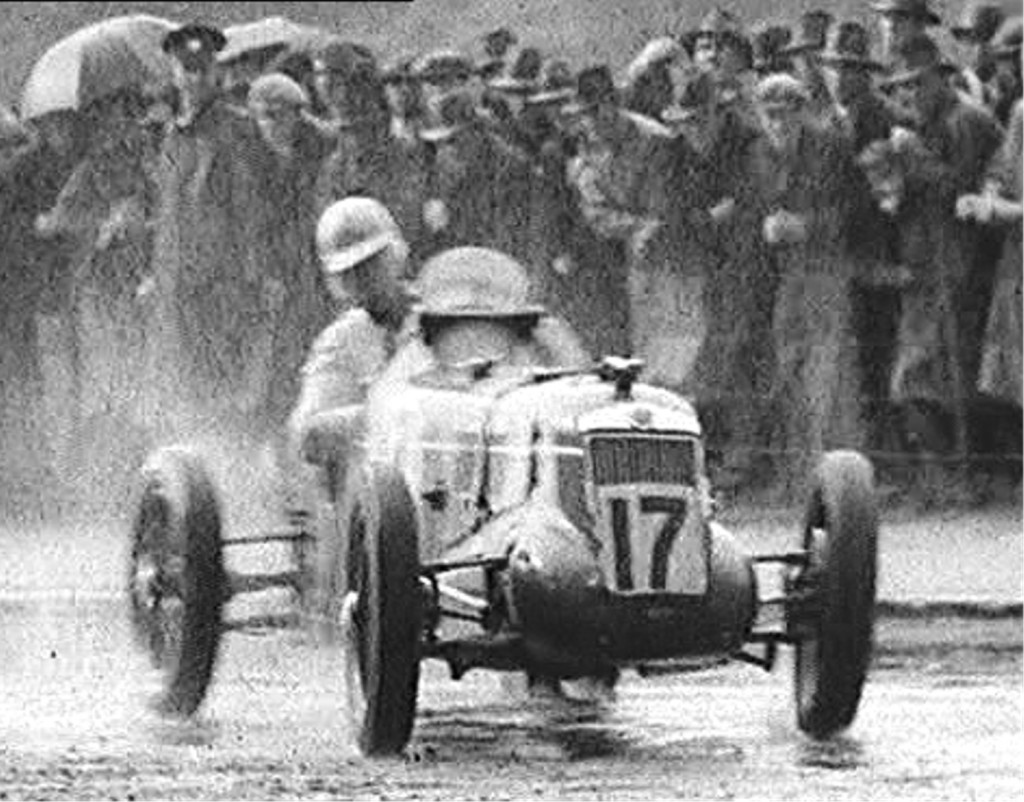
Kieran’s Our City, Our Town Article,
Cork Independent 28 April 2011
In the Footsteps of St. Finbarre (Part 254)
Planning an International Motor Car Race
The effects of the Cork Motor Race on the Carrigrohane Straight Road on Saturday 16 May 1936 were enormous. The bringing of a huge ‘floating’ population to the city and the spending of a large amount of money was very welcome. Hundreds of cross channel visitors availed of their visit to Cork to make tours of the surrounding countryside and many of the famous tourist spots such as Glengarrif, Killarney and Parnasilla.
The bank clearances on the Monday after the race were the largest experienced for many years, and according to businesses, the amounts, which changed hands in Cork between Thursday before the race and the Monday after the race surpassed even the busiest Christmas seasons for the previous decade. Hotels, cafes, restaurants, garages and shops all reaped dividends from the race and the effects of the event were beneficial to every section of the community. It was therefore no surprise that the organisers set out to organise another race the following year in 1937. Preparations began with the aim of obtaining international recognition for the proposed event. The Cork and District Motor Club (formerly Cork Motor Race Committee) joined the Irish Motor Race Committee (IMRC) in promoting the race.
The planned race was elevated to international status by the international body of motor sport at the request of the RIAC. In addition, Cork County Council widened the Carrigrohane Road by nine feet, which allowed for faster speeds to be recorded. The race was planned for 22 May 1937. The entrants themselves were well known names on the racing circuit, some of whom much have been written about in books and results catalogued online by motor car enthusiasts. The high calibre of the motor car drivers brought to Cork is a testament to the all those who organised the event and sought to make the Cork event an international one. The Cork Examiner on Friday 7 May, 1937 recorded a final list of 20 entries for the Cork Race. The Irish contingent comprised Frank O’ Boyle, Dublin, C.G. Neil. Belfast, A.P. MacArthur, Sligo, Charlie H.W. Manders, Dublin and A.J. Thompson, Mallow. Charlie Manders was 250 cc motor cycle champion in the late 1920s. He set up an Adler dealership in Dublin selling Adler motor cars imported from Germany. He was a very successful private entry racing driver. Charlie built the chassis of an Adler Trumph Junior, a single seat racing car, and he went on to race in Ireland in the 1930s up until the war.
The English contingent, like the previous year, comprised big names on the motor car race circuit. Motor car historian Leif Snellman has attempted to compile short biographies online of some of the names (http://www.kolumbus.fi/leif.snellman/main.htm). Reggie Tongue, the winner of the Cork race in 1936 made a return. He had an address from Eccles, Greater Manchester. Born in Urmston, Lancashire in 1912, Tongue was born into a family where his father was a motor car racing driver. Reggie’s father died while Reggie was still at school. After some effort Reggie finally persuaded the trustees to release money for him to order a new Riley car with which he began his career in reliability trials. While at Exeter College, Oxford in 1935, he purchased a MG Magnette and the next year he bought an ERA-B.
B.Bira (London address) was a member of the Royal Thai family, Birabongse. He came to England in 1927 to study at Eton and Cambridge. He started racing in 1935. Charlie Edward Capel Martin (Surrey address) was a Welch driver born in Abergavenny Monmouthshire in 1913. He started racing at Southport sands on the Lancashire coast in 1932 moving on to circuit racing driving an MG, also racing in Bugattis and Alfa Romeos at Donnington and throughout Europe at Pau and Deauville in Grand Prix. He gained wins at Brooklands, Surrey in 1936.
Percy Maclure, (Coventry address) was born in Skipton, Yorkshire 1911. He worked with his bother Edgar Maclure for Riley. Wiliam Riley was a British motorcar and bicycle manufacturer from 1890. The company became part of the Nuffield Organisation in 1938 and was later merged into British Leyland. Ivo Peters (Bristol address) was born in 1915 and was a English railway photographer. Peters spent his life in Bath, Somerset and is best known for his amateur photographs and cine films of steam railways in the British Isles, particularly of the Somerset and Dorset Railway. While studying at the University of Cambridge, his interest was diverted to road racing in Ireland.
Anthony Powys Lybbe (Berks, Berkshire address) was born in Streatley-on-Thames, Berkshire in 1909. At age of 18 he went to the Royal Military Academy, Woolwich, London for officer training within the Royal Corps of Signals. He left the army by 1933 and amongst other interests took up motor-racing.
The other UK drivers were Peter Whitehead (Harrowgate address), Sir Alistair W. MacRobert (Surrey address), Cyril Mervyn White (Buckinghamshire address), W.H. Dobson (Surrey), J.F. Gee (Cheshire), H.B. Prestwich (Altrincham address, Greater Manchester), John Henry Smith (London address) and A.P. Watson (Surrey). There was one woman driver Mrs. A. C. Dobson from Sussex who drove her husband’s 1 ½ litre Riley.
To be continued…
Captions:
588a. Victoria Cross, Cork International Motor Car Race, 22 May 1937 (source: still from British Pathé, http://www.britishpathe.com/record.php?id=7822)
588b. Carrigrohane Straight Road, Cork International Motor Car Race, 22 May 1937 (source: still from British Pathé)
